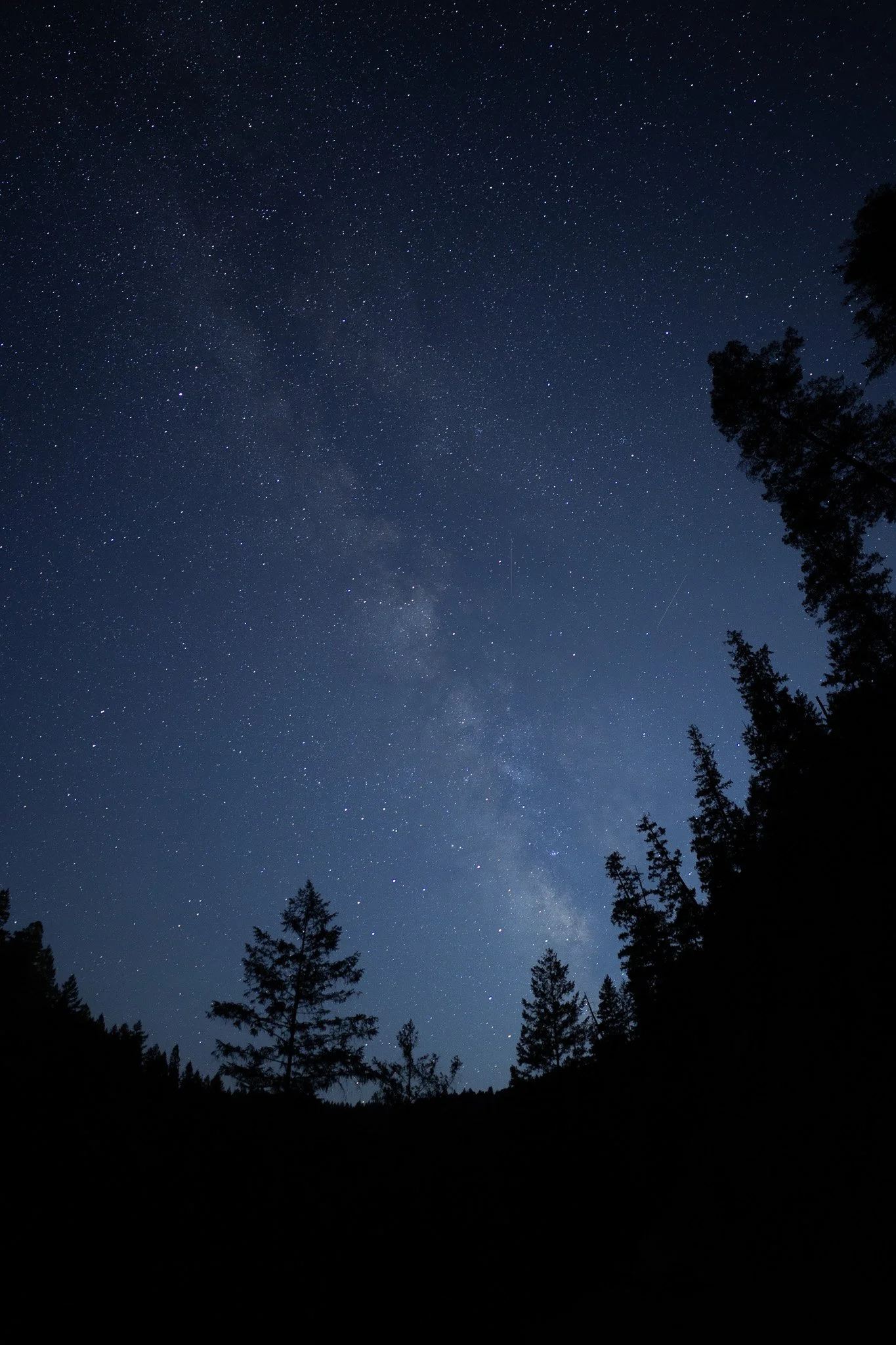Perseid meteor shower and aurora borealis
By now, it’s no surprise that much of the US got to see aurora borealis when we went to see the peak of the Perseid meteor shower on August 12, 2024. But this is my story.
I set out toward the Sonoma Coast an hour or so before sunset in acceptance that while the forecast did not show fog, it is almost always more likely than not along the Northern California coastline. My backup if the coast was socked in was to head north and then take Skaggs Springs Road toward Lake Sonoma, a rough country road that spans 35 miles of Redwoods, scrub oaks, pot holes, blind corners, and steep drop-offs. In my limited experience along this road, I’ve found some nice spots for photographing the Milky Way with Bortle 2 skies (very low ambient light, which is ideal).
As I neared the coast on River Road, which traces the Russian River, I could see the clouds and fog just to the south, within a mile or so. I turned right to head toward Jenner, and stopped at a pull-out in time to enjoy the sunset and take a few photos of the sea and the rocks, noticing one rock that has two arches I’d never noticed before.
Looking south to the fog coming in over Goat Rock and the mouth of the Russian River
Sunset near Jenner, California
Rock with two arches (I can’t find anything to indicate this rock has a name)
I enjoyed the view for a few minutes as I watched cars leave once the sun dipped below the clouds. The fog crept in even more, and I hopped in my car and drove north, the fog nipping at my heels the whole way.
While I could still see the crescent moon and its reflection in the ocean, along with some stars, it was clear that the coast was not going to be the best place to watch the meteor shower. I stopped at a few spots along Highway 1 to take a few photos, then proceeded north, then west once I saw Stewarts Point Store, onto Skaggs Point Road.
The crescent (I promise it’s a crescent) moon’s reflection on the Pacific
The road quickly began to climb and narrow as I dipped into turn after turn, proceeding slowly and enjoying the narrow tunnel of Redwood trees while I snacked on popcorn and listened to a podcast.
An hour later, I came to the first pull-out where I stopped to snap some shots of the Milky Way between the trees.
I continued down the road, stopping periodically and taking shots, hoping to capture some of the meteors.
The advice when looking for Perseid meteors is to look north. I set up my camera on my tripod facing north, took a few test shots, and programmed it to take shots repeatedly, something I often do when shooting nightscapes.
At one point, I noticed that the horizon had a pink haze. Living in northern California, we’re accustomed to fires this time of year, but those hazes are more orange, and have smoke associated with them. This was definitely pink and not orange. I snapped a shot with my phone, and lo and behold, it was aurora borealis!
I excitedly recorded a short video on my phone as I continued to capture photos in that direction. The horizon changed throughout the evening, with two real peaks of the lights that I observed before 3:30AM, when I became too tired to stay out and make the hour drive home safely.
When I took down my camera, I scanned through the shots and was elated to find a glorious display of aurora’s lines and colors, along with a handful of Perseid meteors.
Enjoy a small taste of some of the shots I captured!
Perseid meteors are pink and green together in the same line, so when looking at the photos, if the line is white or uniform, that is a satellite. Yes, there are A LOT of satellites… I currently choose not to edit them out, as they are part of the reality of our skies. Thankfully no planes in these ones!











